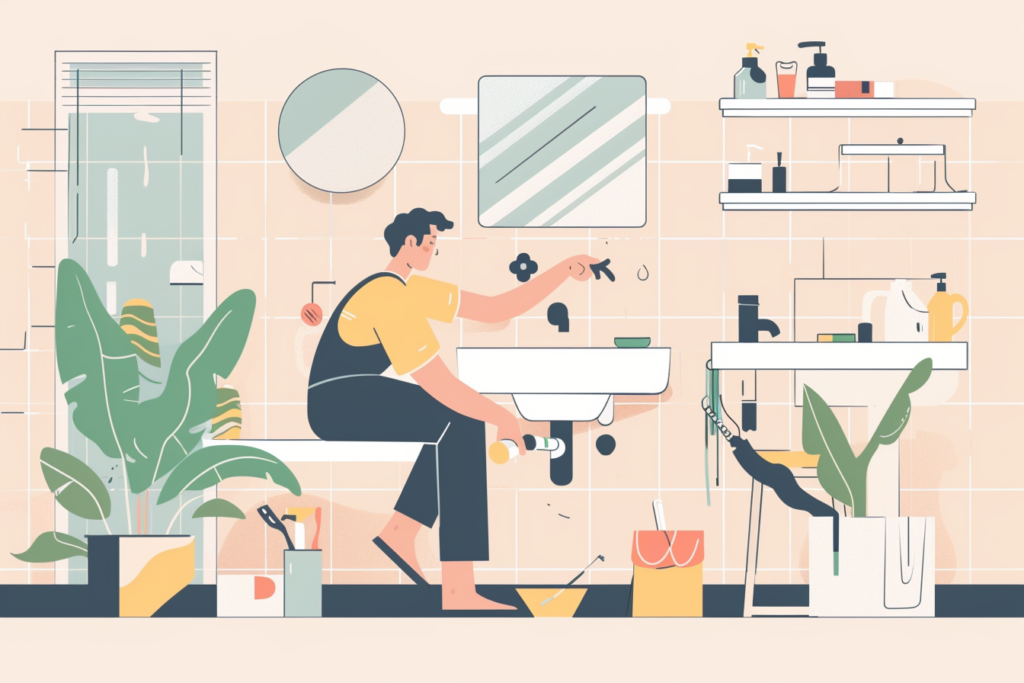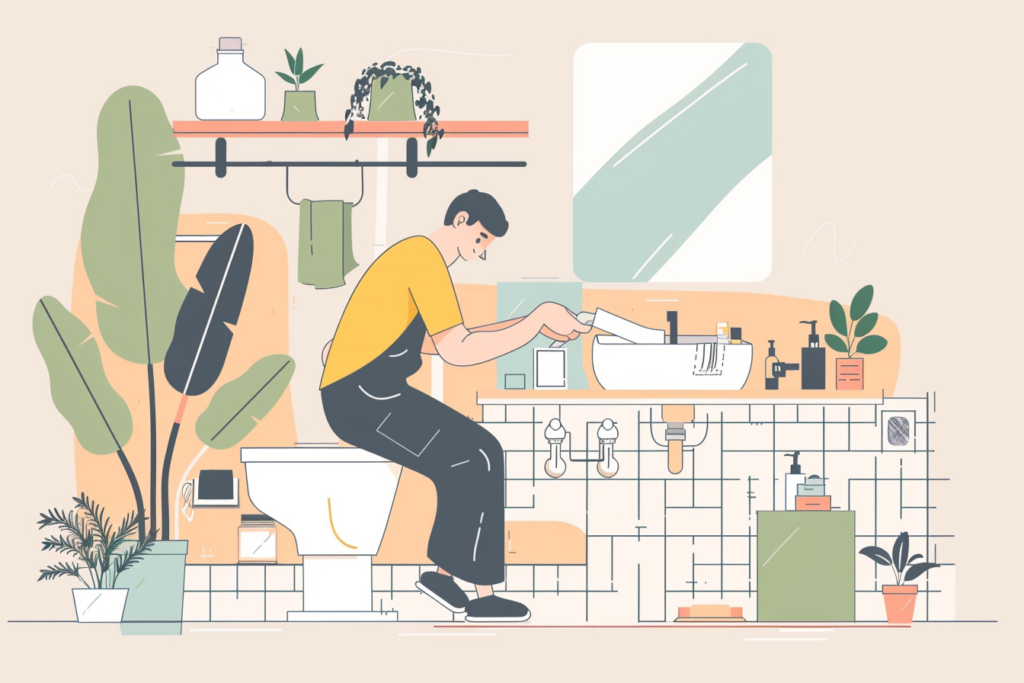Plumbing issues are a recurring headache for homeowners. From minor annoyances like dripping faucets to major disruptions like burst pipes, these problems can cause significant inconvenience and expense.
The good news is many household plumbing problems are preventable with regular maintenance and a bit of know-how. Keep reading as we explore some of the most common plumbing issues and offer a handful of practical tips on preventing them.
1. Leaky Faucets
While very annoying, a dripping faucet can also waste a significant amount of water and money over time. Worn-out washers, O-rings, or corrosion often cause this issue.
Prevention:
- Regular Inspection: Periodically check faucets for any signs of wear and tear.
- Replace Washers and O-rings: If you notice drips, replace the washers and O-rings promptly. These inexpensive parts can easily be replaced with basic tools.
- Avoid Over-Tightening: Don’t over-tighten faucets, as this can damage the components and lead to leaks.
2. Clogged Drains
Clogged drains can occur in sinks, showers, and bathtubs, often due to hair, soap scum, grease, and other debris building up over time. We’ve all had a clogged drain at least once over the years.
Prevention:
- Use Drain Guards: Install drain guards, catching hair, lint, soap scum or other debris before it goes down the drain.
- Regular Cleaning: Clean drains regularly using a mix of the trusted cure, baking soda and vinegar, followed by hot water. This helps break down and flush away minor blockages.
- Dispose of Grease Properly: Avoid pouring grease down the kitchen sink. Instead, use a can or glass container and throw it away.
3. Running Toilets
A running toilet can also waste an obscene amount of water, which is usually caused by a broken flapper valve, which controls the water flow from the tank to the bowl and luckily, is very easy to replace!
Prevention:
- Inspect the Flapper Valve: Regularly check the flapper valve for signs of wear and tear. If it’s worn out, replace it.
- Adjust the Float: Ensure the float is properly adjusted so that the toilet tank fills to the correct level.
- Check the Fill Tube: Make sure the fill tube is not positioned too high or too low in the overflow pipe.
4. Low Water Pressure
Low water pressure can be caused by various issues, including pipe corrosion, leaks, or sediment buildup in the pipes and can lead to serious issues if not addressed.
Prevention:
- Clean Faucet Aerators: Mineral deposits can clog aerators on faucets and showerheads. Remove and clean them regularly.
- Check for Leaks: It’s important to inspect your plumbing system for potential leaks and fix them right away.
- Install a Water Softener: If you have hard water, it might be time to install a water softener to reduce any mineral buildup in the pipes.
5. Leaky Pipes
If not addressed promptly, leaky pipes can cause significant water damage and mold growth. They are often caused by corrosion, high water pressure, or joint damage.
Prevention:
- Insulate Pipes: Insulate pipes, especially those in unheated areas, to prevent freezing and bursting in cold weather.
- Monitor Water Pressure: Ensure your home’s water pressure falls in the recommended range (typically 40-60 psi). Use a pressure regulator if necessary.
- Regular Inspection: Inspect exposed pipes for signs of corrosion, rust, or leaks.
6. Water Heater Issues
Water heater problems can range from no hot water to leaks or strange noises. These issues can stem from sediment buildup, thermostat failures, or corrosion.
Prevention:
- Flush the Tank: It is important to drain and flush your tank every year to remove sediment buildup.
- Inspect the Anode Rod: To extend the life of your water heater, check and replace the anode rod if it’s heavily corroded.
- Regular Maintenance: Schedule professional inspections and maintenance to ensure the water heater is functioning properly.
7. Burst Pipes

Burst pipes are a severe plumbing issue that can cause extensive water damage. They are often the result of freezing temperatures, high water pressure, or old, weakened pipes.
Prevention:
- Insulate Exposed Pipes: Insulate pipes in cold areas to prevent freezing for added protection.
- Keep the Temperature Consistent: To prevent pipes from freezing, keep the temperature consistent in your home, even when you’re away.
- Check Pipe Conditions: Regularly inspect and replace old or damaged pipes to reduce the risk of bursting.
8. Sewer Line Issues
Sewer line issues can be more detrimental than you think, leading to sewage backups in your home. This happened to us the week after we closed on our house and is often caused by tree roots infiltrating the sewer line, blockages, or pipe deterioration. In our case, it caused a significant backup in the basement after the first bath in our new home.
Prevention:
- Avoid Planting Trees Near Sewer Lines: Be conscious of where you plant trees and shrubs to prevent root infiltration.
- Dispose of Waste Properly: Don’t flush items that can cause blockages, such as wipes, feminine hygiene products, or excessive toilet paper.
- Regular Inspections: Call a professional to inspect your sewer line periodically to detect and address potential problems early.
9. Sump Pump Failure
When a sump pump breaks, it often leads to basement flooding and excessive water damage. Power outages, mechanical issues, or improper installation can cause this.
Prevention:
- Test the Sump Pump: Regularly test your sump pump to ensure it’s working correctly.
- Install a Backup Power Source: Consider installing a battery backup or buying a generator to ensure your sump pump operates during power outages.
- Clean the Sump Pit: Keep the sump pit clean and debris-free to prevent clogs and future mechanical issues.
Conclusion
Preventing common plumbing problems involves regular maintenance, prompt repairs, and mindful usage of your home’s plumbing system. You can avoid costly repairs and ensure your plumbing system operates smoothly by taking proactive steps.
Remember to conduct regular inspections, address minor issues before they become major problems, and seek professional help when necessary. With these practices, you can keep your plumbing in top condition and enjoy a hassle-free home environment.
You might also be interested in: Kitchen Remodeling Ideas To Transform Your Space




